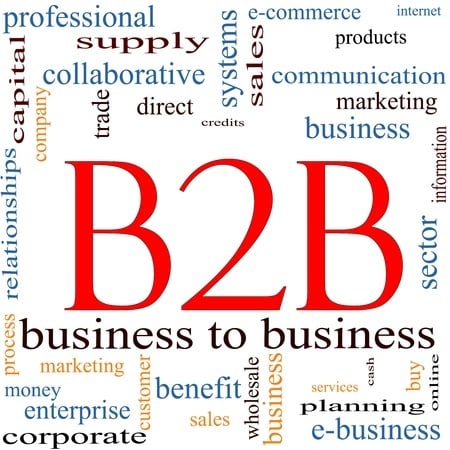Today’s blog post was originally featured on socialmediab2b.com.
A social approach does not alter the fundamental ingredients for B2B selling success: building trust and cultivating relationships. However, it does enable new selling tactics along the sales process that align more naturally to the changing behaviors of customers and prospects in a networked world.
1. Create the Foundation for Social Selling
A prerequisite for social selling is identifying your target accounts and contacts. Do you know the full set of customers and prospects in your sales territory? Can you find those accounts in the CRM system? Do you have at least one relevant contact associated with each account? Even leading sales organizations leave money on the table because of an inconsistent and incomplete view of their sales universe. One B2B organization, which prided itself on sophisticated CRM and sales workflow processes, was able to increase its sales universe by 60% by identifying eligible accounts not entered into CRM, removing inactive and duplicate accounts, and ensuring that the right reps were assigned to the right accounts (e.g., Hunters assigned to Prospects).
2. Connect with Your Target Contacts on LinkedIn and Twitter
LinkedIn profiles are chock-full of rich context (e.g., schools attended, prior jobs, LinkedIn Groups) and predictive business triggers (e.g., event updates, conferences attended). What percent of your active contacts in CRM are you linked to? Start by connecting to your closest relationships first, adding a thoughtful and contact specific note in the invitation. Going forward, invite contacts to link after your first meaningful meeting or call. LinkedIn profiles offer a direct gateway to Twitter handles. This is a major benefit as Twitter handles are otherwise difficult to obtain and often do not clearly indicate a person’s full name (e.g., Lattice Engines CEO Shashi Upadhyay goes by @shashikup on Twitter).
3. Profile Your Contacts with Social Data
The key is to focus on the five most important profiling elements that matter most for your business (e.g., industry group participation, recent promotion) or selling style (e.g., buyer’s favorite sports team). This information should be captured in your CRM contact record. Create alerts to track profile changes and update your records on a monthly basis.
4. Account and Contact Targeting
Successful reps align their selling time to the account opportunities with the highest likelihood of conversion and/or highest likely deal value. Listening to posts (e.g., in LinkedIn groups) from employees at your target customers and prospects can surface customer needs and sales opportunities. Reps can do this on their own, but companies can help automate this process and help prioritize the most important insights.
In addition, B2B companies can apply technologies that synthesize activity on social media networks. For example, companies with stronger social media footprints (e.g., more connections, more postings) are typically more likely to be in growth mode and are often more open to technology-based solutions. Data culled from social networks should be an essential component of the full array of internal and external data sources that companies should analyze to help their reps align selling time to the top account opportunities. Laser-focused on the highest-priority accounts, reps now need to identify and connect with the right decision-makers and influencers.
Social networks, like LinkedIn, are rapidly becoming sales staples for generating new connections and warm referrals. Sales Intelligence solutions extend the power of social networks by enabling a sales team to pool together each rep’s connections into one collective network on an opt-in basis. Reps benefit by accessing more contacts at their target accounts, connected by their trusted colleagues.
5. Gaining Access to Purchase Decision-Makers
Once accounts are ranked, the toughest part is actually getting through to decision-makers. Your buyers are highly busy professionals, inundated by meetings, projects, email and endless to-do lists. On top of their work priorities, they are solicited daily by a myriad of vendors seeking a sliver of their precious time. So, when your contact finally picks up the phone, you have 30 seconds to pique her interest. A sure way to blow the call is to drone on about how great your company’s products are. What does work is immediately demonstrating a thorough understanding of the customer’s business goals and how you can help them achieve success. Set aside one hour weekly to review what your contacts are saying in their social updates, in their tweets and in groups.
6. Building Trust-Based Relationships with Each Customer Interaction
Social networks make it so much easier to stay top-of-mind in between formal phone calls and meetings. It’s as easy as sharing a weekly update on an important event in your industry or liking a post from one of your contacts. The subject matter should be educational and informative with no trace of a sales pitch. In addition, nothing accelerates sales cycles like demonstrating how similar companies have succeeded with your solution. The power of social selling stems from the ability to help reps demonstrate peer success. Sales intelligence software automatically identifies these peer reference cases. Reps benefit because they can apply proven tactics and collateral used by their colleagues to close similar deals and because they quickly and automatically share the most relevant and compelling success stories with their customers.
These six steps are an excerpt from the whitepaper Social Selling: What’s Really In It for B2B Sales. Download it to learn more about social selling.
What has your experience been using a social approach to B2B selling? Please share your thoughts below.



